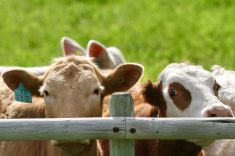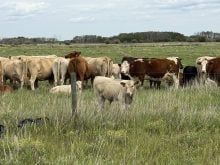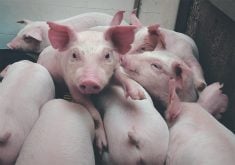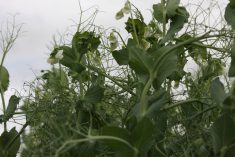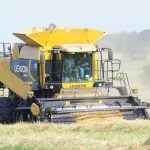Tails and testicles. They’re two parts of the sheep Miles Buswell doesn’t want to see in the auction ring.
Even though buyers pay less for sheep with tails and testicles intact, some producers still don’t take them off.
Buswell, manager of sheep and goat sales at Beaver Hill Auction in Tofield, Alta., doesn’t know if the long-tailed animals were missed or if it’s a growing trend to leave tails intact for animal welfare reasons.
Read Also
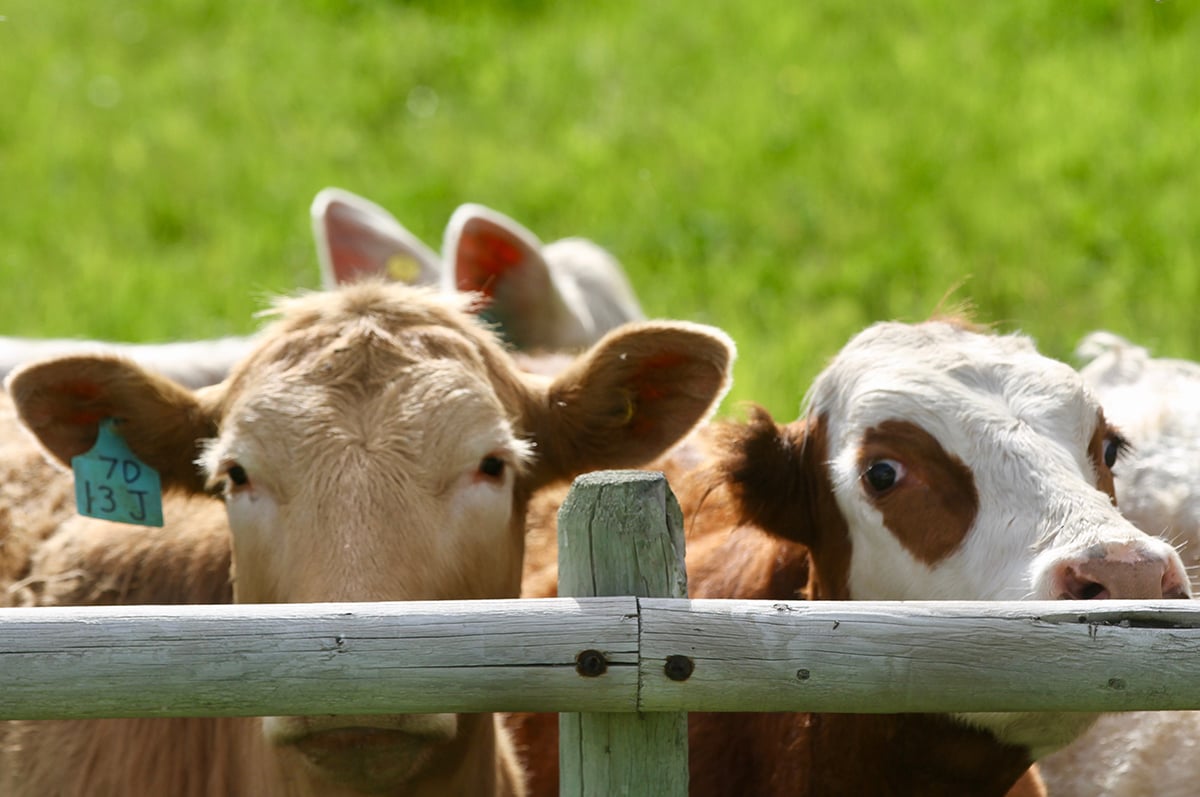
Feeder market consolidates at historic highs
For the week ending Sept. 6, Western Canadian feeder cattle markets were relatively unchanged compared to seven days earlier.
“The general rule of thumb is the uglier your lambs coming through the ring, the less you’re going to get paid. Testicles and tails are considered ugly on a lamb,” said Buswell.
During the Oct. 5 auction, buyers paid an average $10 to $15 per hundredweight less for lambs with tails and testicles.
“Feedlots need lambs with their tails docked and castrated or they’re not interested in buying feeder lambs,” he said.
“It definitely puts more money in your pocket if you dock,” he said.
Dealing with long-tailed lambs may be a growing trend. In the Animal Welfare Approved newsletter, a program auditor believed farmers should move away from tail docking because of the pain caused by placing the rubber ring around the tail of the animal shortly after it is born.
“In the last 10 years, research has clearly demonstrated that however tail docking is performed, no matter the age, it causes significant pain and distress to lambs,” wrote Anna Bassett, a senior technical adviser with the Animal Welfare Approved program.
Bassett recommended farmers use other techniques to decrease the likelihood of fly strike, an infection usually found around a lamb’s anus when tails are not docked and excess feces cling to the wool.
Bassett recommended that producers keep sheep off rich grass, have a good worming regime, and try to reduce the fly population, which should reduce dung and urine in the wool and prevent fly strike.
Phil Kolodychuk, a Bluesky, Alta., sheep producer and vice-chair of the Alberta Lamb Producers, said anyone who has seen a sheep with fly strike knows the tail docking debate is a non starter.
“It’s horrible. I had it in my sheep this year and it wasn’t very good.”
A sheep with fly strike is generally a dead sheep when the maggots from the fly eggs start burrowing into the animal.
“I can’t see too many people not wanting to tail dock. It’s a management tool and it’s a good one.”
Kathy Parker, a veterinarian and also a member of the Alberta Lamb Producers board of directors, said tail docking is recommended when done appropriately and on the right breed.
It’s not recommended on sheep with hair, like Barbado or Katahdin because feces don’t stick as much to hair. It’s also not as important in short-tailed sheep like Finnsheep or Romanov.
“It’s definitely recommended to dock tail in an appropriate manner, except those hair breeds,” said Parker.
Contamination risk
Randy Smith, a lamb buyer for Sunterra Meats in Innisfail, Alta., said he avoids buying sheep with long tails to prevent meat contamination after slaughter.
“It’s time consuming to deal with if the feces touches the meat,” he said.
“We don’t want them.”
Smith said long-tailed animals are discounted 10 cents a pound to discourage the practice. Hair sheep are not discounted the same amount.
Smith said he doesn’t see a growing number of long-tailed animals coming to the plant, but the same producers bring them in every year.
Andrew Gunther, program director for Animal Welfare Approved, said their program is not aimed at commercial producers, but at sheep farmers trying to sell into niche markets.
Instead, the farmers looking for their animal welfare stamp are likely to sell direct to consumers willing to pay up to 30 percent premium to producers who follow strict animal welfare guidelines, including not docking the tails of their lambs.
“We wouldn’t expect AWA farmers to sell their finished product into the conventional market,” said Gunther.
“Over time we hope that niche market will grow.”
The first Canadian farms to receive the Animal Welfare Approved stamp will be next spring, he said.


